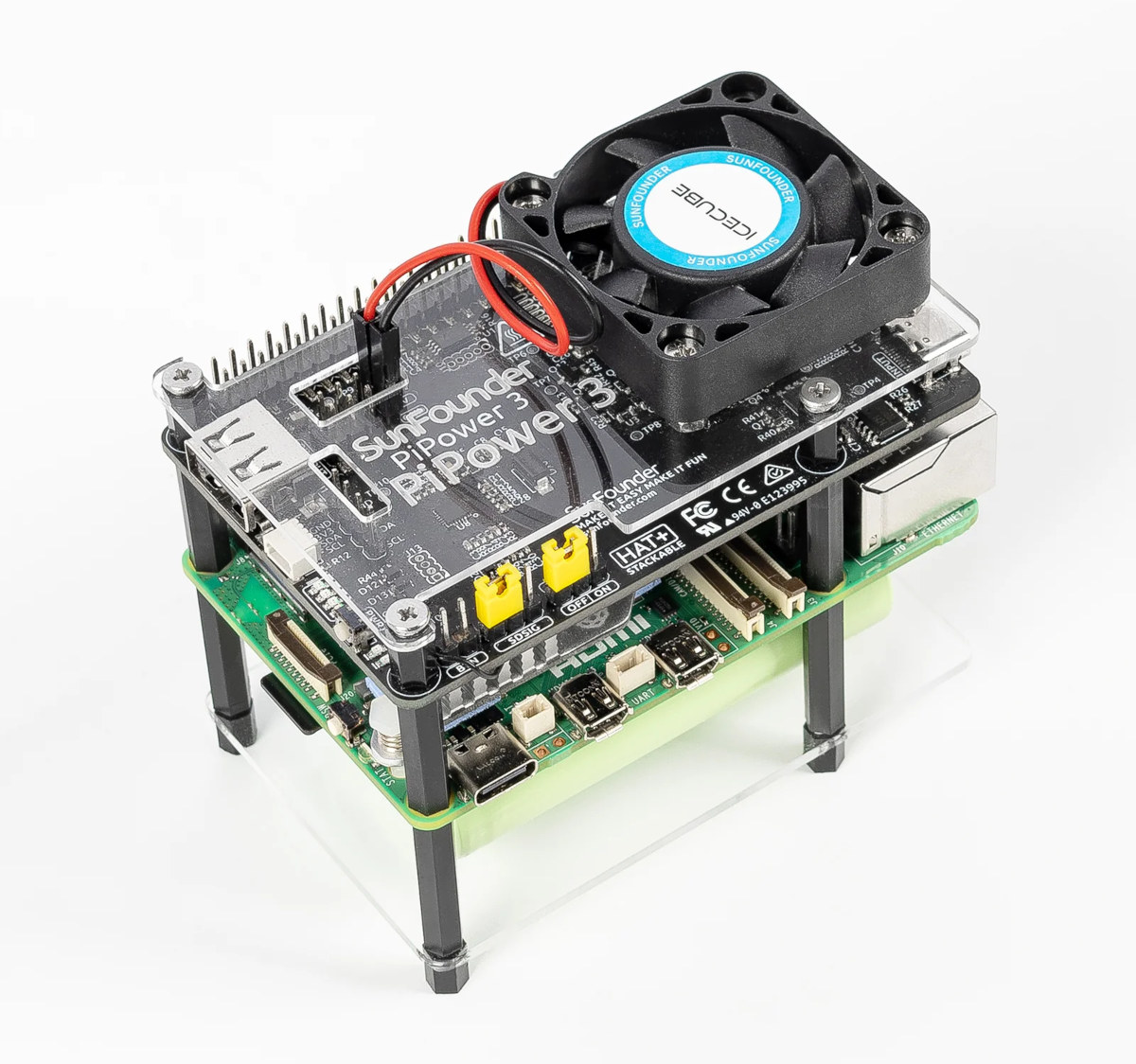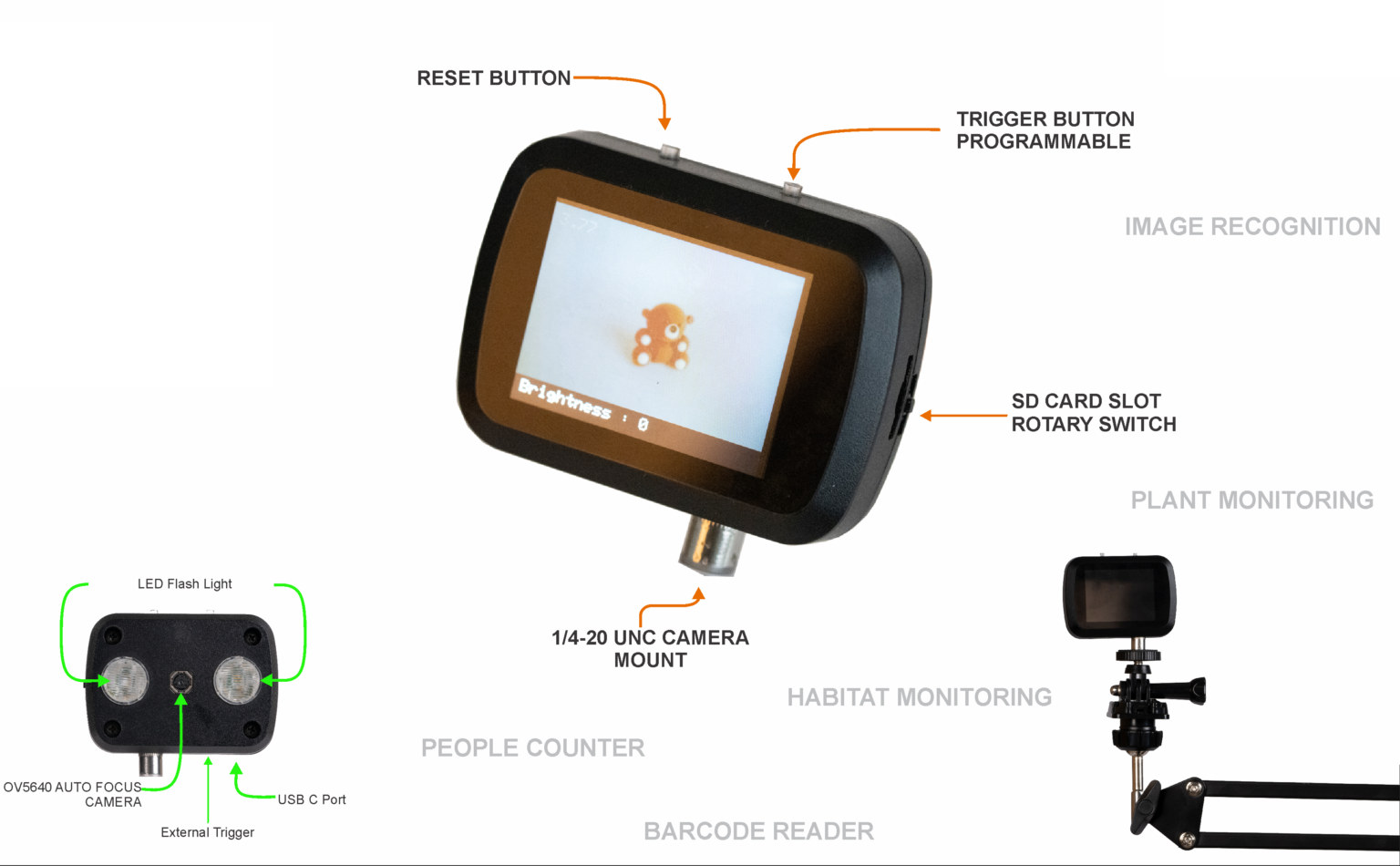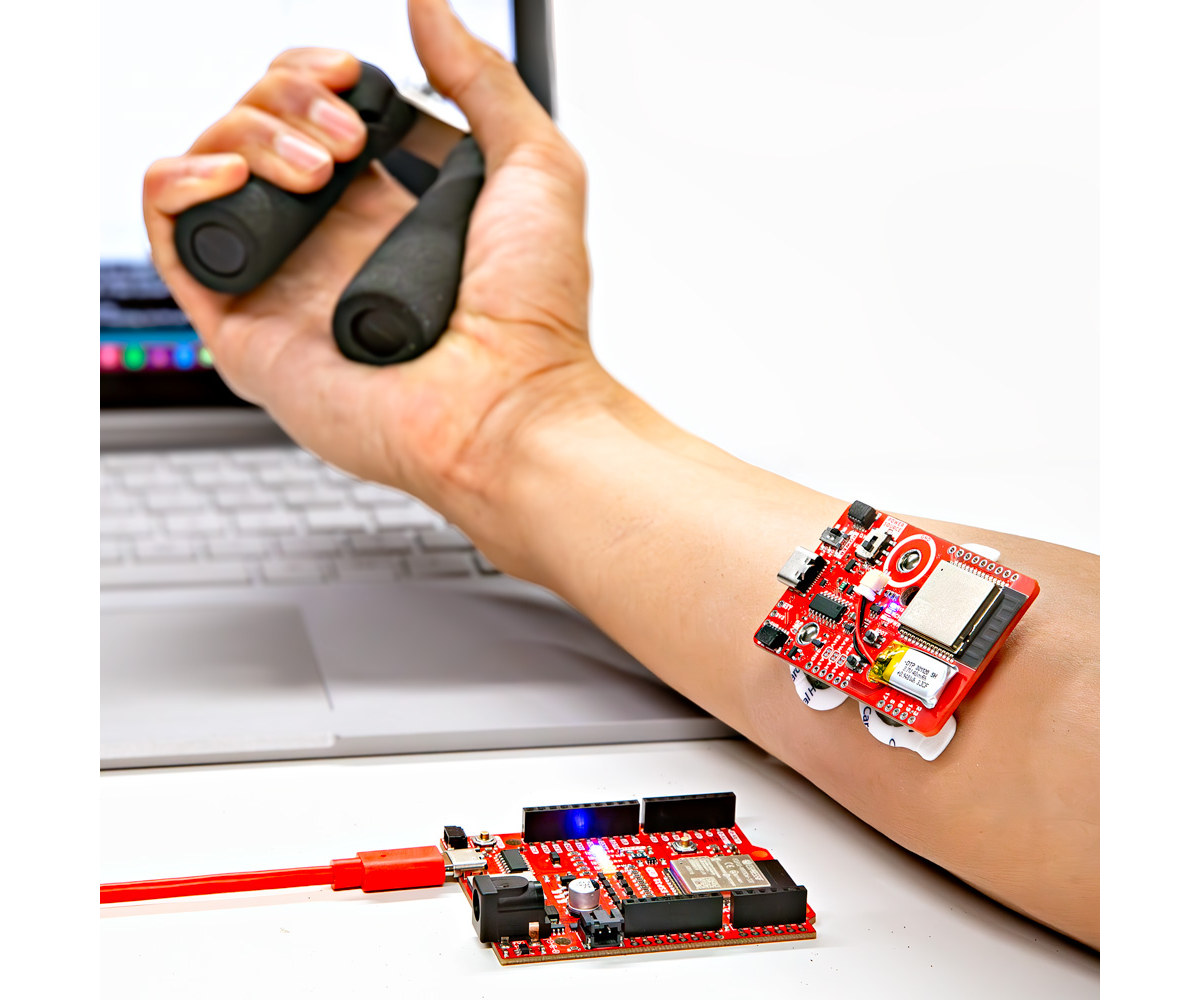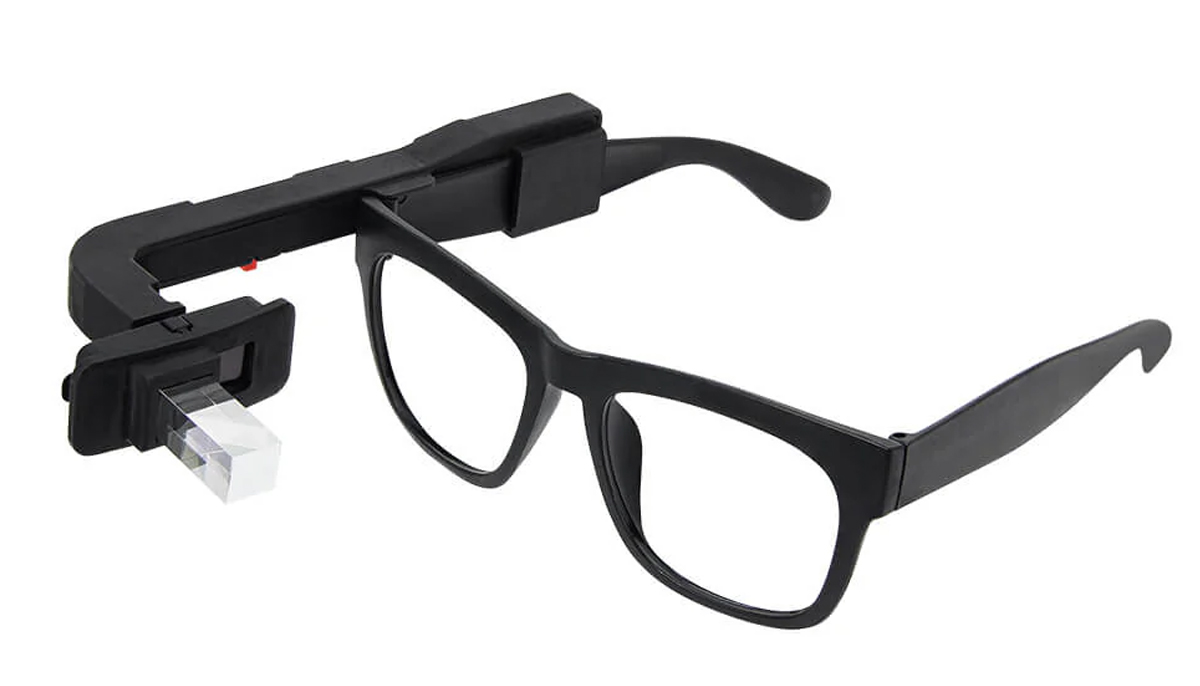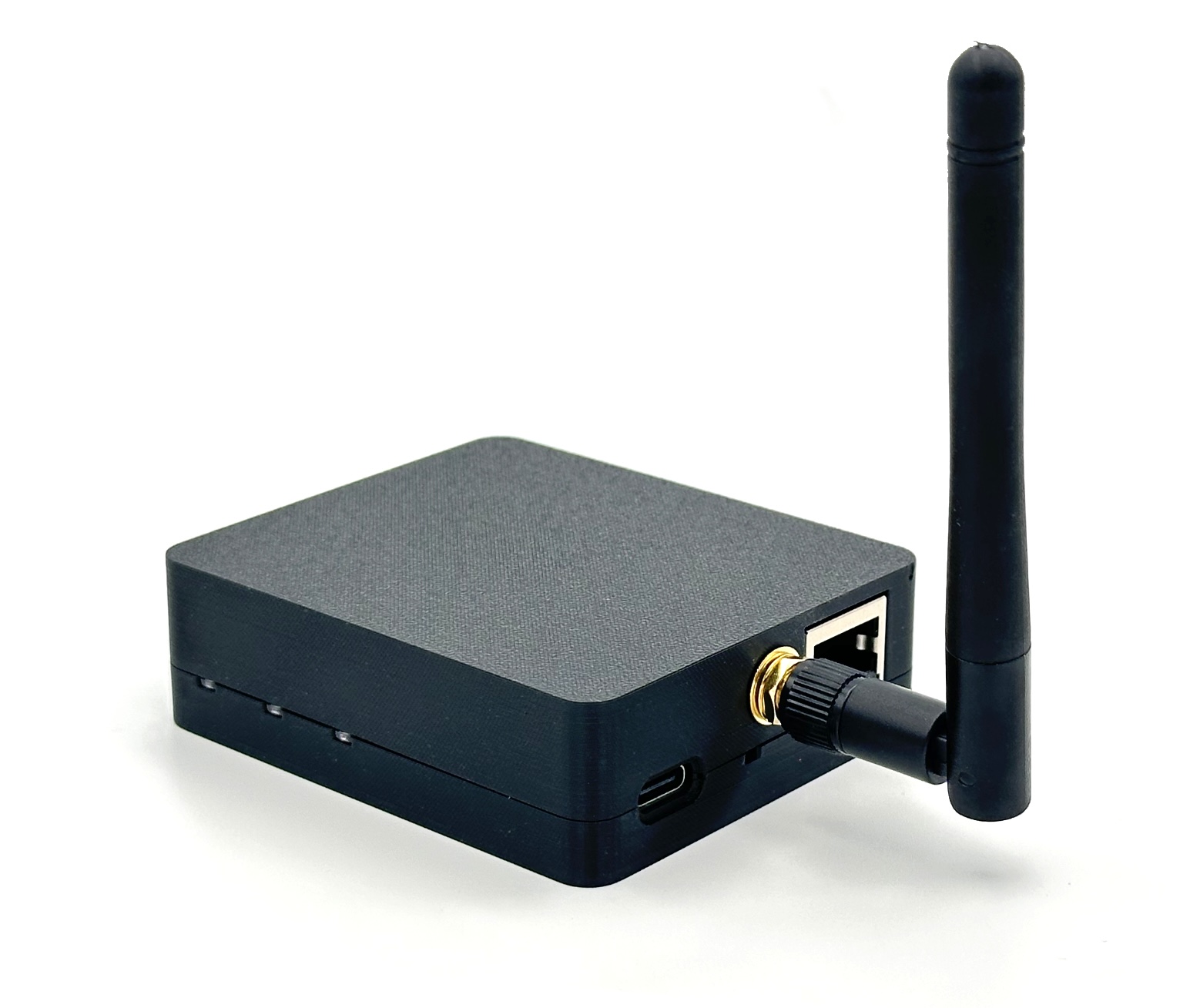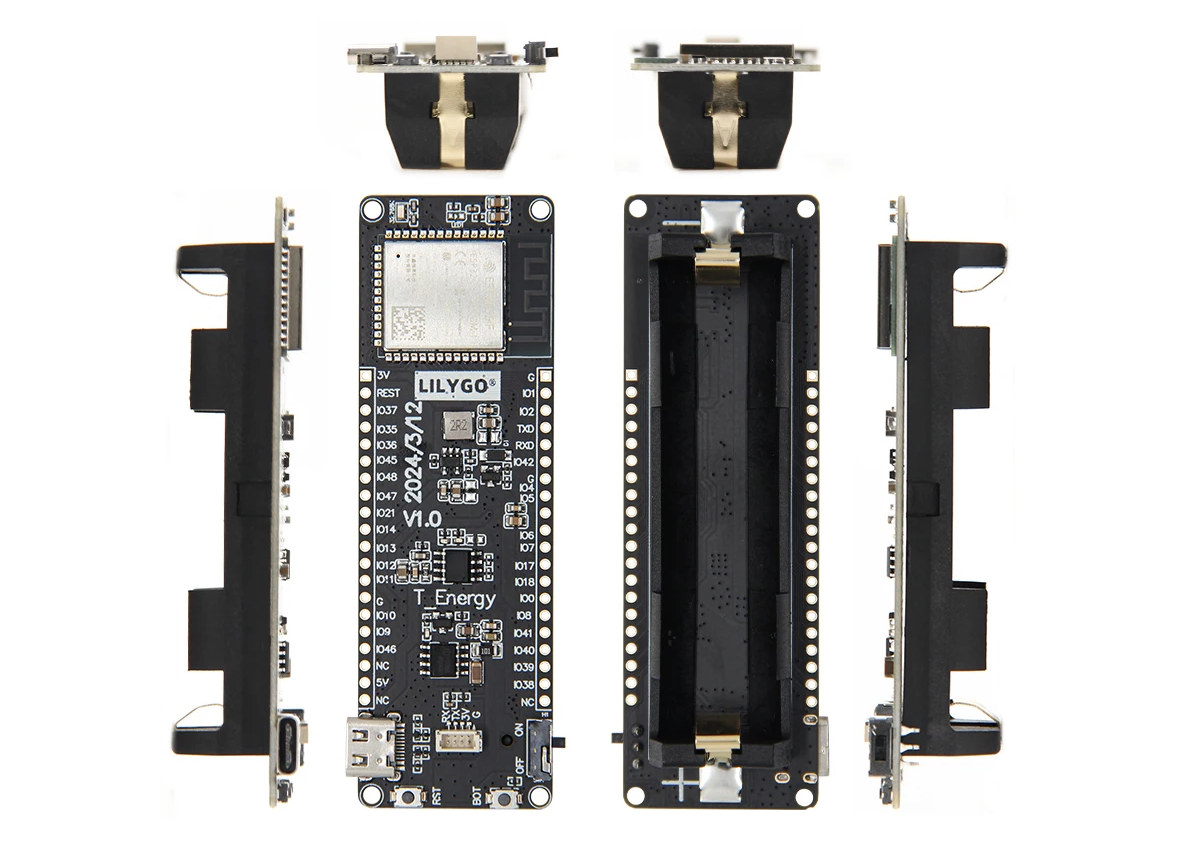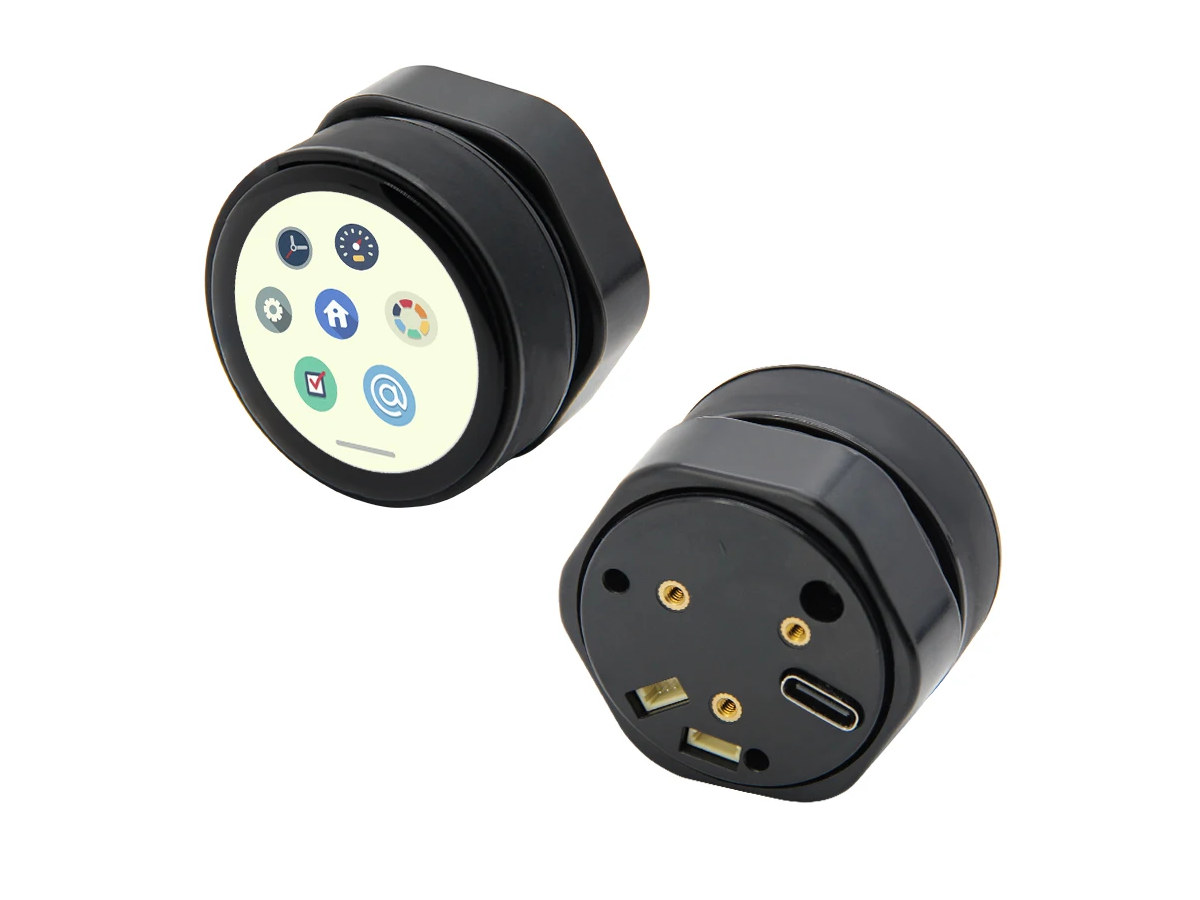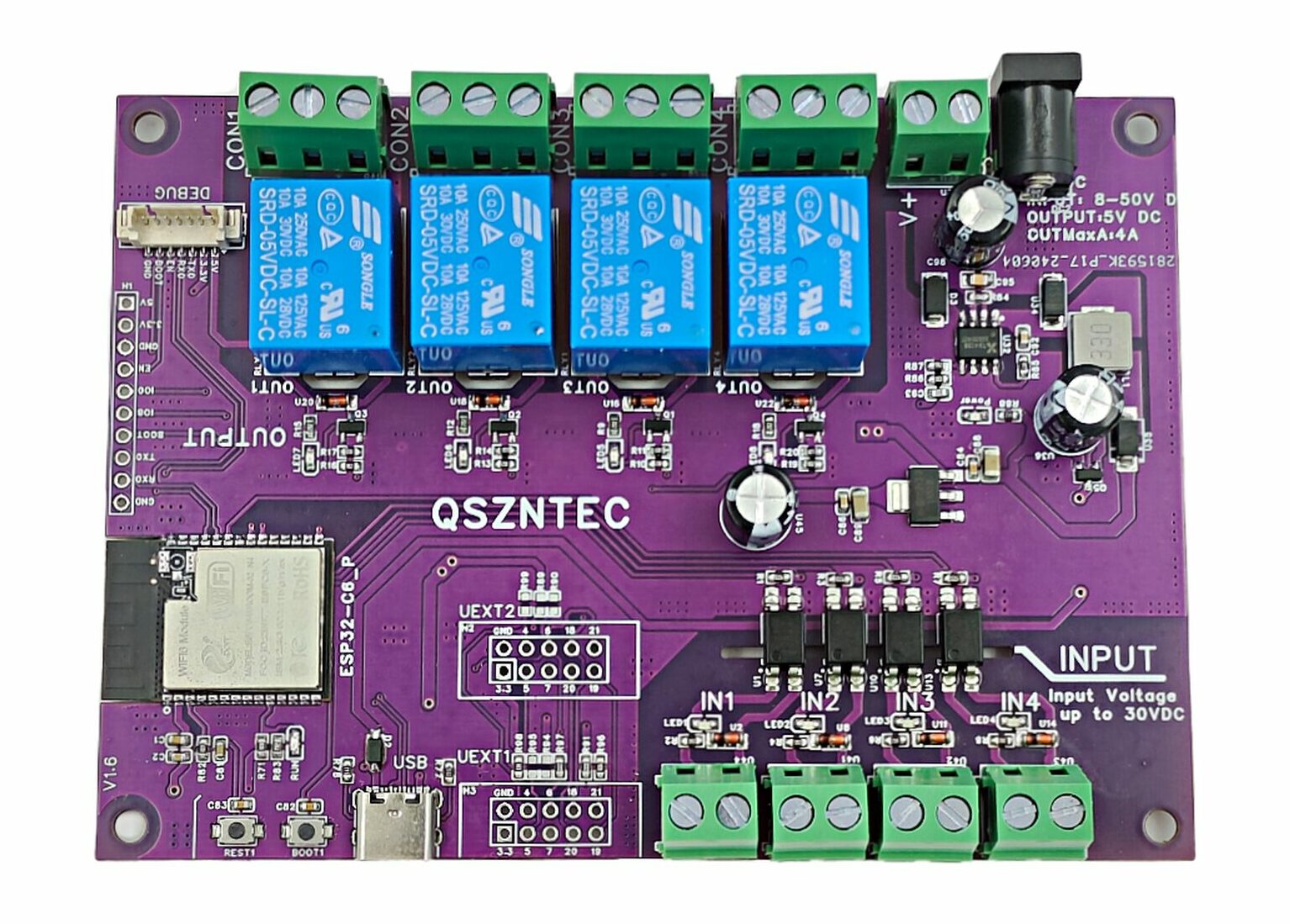SunFounder PiPower 3 kit is a UPS solution designed to work with the Raspberry Pi 5, other Arm SBCs, or even MCU boards like Arduino UNO and Raspberry Pi Pico. The board delivers a stable 5V/5A output, and a 32-bit CH32V003 RISC-V microcontroller takes care of power management and battery level reporting to make sure the Raspberry Pi 5 keeps running when a power failure occurs and shutdowns gracefully when the battery level is low. The kit comes with two 18650 2,000mAh batteries that connect through a 2-pin connector, and all accessories – standoffs, acrylic case, and fan – for assembly with the Raspberry Pi 5, or other compatible boards like the Pi 4, Banana Pi BPI-M5, Radxa Rock Pi E, Orange Pi 3B, and others. PiPower 3 kit specifications: 32-bit CH32V003 RISC-V microcontroller supporting I2C communication Input – 5V/5A via USB Type-C with PD support Output – 5V/5A […]
NORVI AI Optic is an ESP32-S3 autofocus camera with dual LED flashlight, 2.1-inch LCD display
NORVI Controllers’ AI Optic – also written as AIOptic – is an ESP32-S3 camera solution with a 5MP OV5640 autofocus camera module, a 2.1-inch LCD Display, a dual LED flashlight, and a microSD card for data storage. The camera also features a USB-C port for power and programming and a built-in 600mAh backup battery. It comes with a rotary switch for menu navigation and power on/off and supports external triggers via a dry contact input. NORVI AI Optic specifications: Wireless module – ESP32-S3-WROOM-1U-N16R8 MCU – ESP32-S3 dual-core Tensilica LX7 up to 240 MHz with vector extension (for ML/AI), 512KB SRAM Memory – 8MB PSRAM Storage – 16MB flash Wireless – WiFi 4 and Bluetooth LE 5 Storage – MicroSD card slot Display – Optional 2.1-inch LCD display with 320×240 resolution using ST7789 driver Camera – 5MP OV5640 autofocus camera USB – 1x USB Type-C port for power and programming Misc Dual […]
MyoWare 2.0 Muscle Sensor Wireless Kit targets electromyography (EMG) applications
The MyoWare 2.0 Muscle Sensor Wireless Kit is an Arduino-compatible electromyography (EMG) sensor kit capable of detecting and measuring the electrical signals generated by muscle fibers in the body. The MyoWare 2.0 kit is a collaborative product by SparkFun and Advancer Technologies. The MyoWare 2.0 ecosystem brings several improvements over the previous generation, including a compact design, solderless snap connectors, and an upgraded chipset for improved reliability and performance. It includes shields designed to seamlessly interface with the MyoWare 2.0 Muscle sensor, a wearable, Arduino-compatible EMG sensor. The Muscle Sensor’s wearable design makes it possible to directly attach biomedical sensor pads and add-on shields to the board. It operates on a single-supply voltage between +3.3V to +5V and supports three separate output modes. It analyzes filtered and rectified activity from muscle movement and outputs a signal from 0 to the power source voltage (VIN) that represents the intensity of flex. […]
LILYGO T-Glass – An ESP32-powered smart glasses with 1.1-inch prism display, IMU, microphone, and more
LILYGO T-Glass is an ESP32-S3-powered smart glasses development platform with a smart Bosch IMU, an integrated microphone, a touch button, and a 1.1-inch full-color prism display with 126 x 126 resolution. The features and specifications make this device similar to a Google Glass 2 or Google Glass Enterprise Edition v2 but with a developer-friendly codebase and much room for tinkering. In our previous post, we also wrote about Pivothead SMART glasses and Qualcomm Snapdragon XR1 AR smart viewer feel free to check those out if you are looking for similar but more powerful products than this one. LILYGO T-Glass specifications: Wireless SoC – Espressif Systems ESP32-S3FN4R2 CPU – Dual-core Tensilica LX7 @ up to 240 MHz with vector instructions for AI acceleration Memory – 512KB RAM, 2MB PSRAM Storage – 4MB flash Wireless – 2.4 GHz WiFi 4 and Bluetooth Display – 1.1-inch full color LTPS AMOLED JD9613 display (294 x 126 pixels) […]
Zigbee Coordinator CC2652P7 1.0 runs open-source firmware, works with Zigbee2MQTT, Home Assistant, and ioBroker
The cod.m Zigbee Coordinator 1.0 (CZC 1.0) is a hybrid ZigBee coordinator that can be used to connect devices over a network (Ethernet/Wi-Fi) and USB. The ZigBee Coordinator version 1.0 is an upgrade of version 0.2 released in 2022. The CZC 1.0 replaces the Texas Instruments CC2652P2 chip with the much more powerful CC2652P7 chip, uses an ESP32-WROOM-32E module instead of the USR-K6 chip, and adds compatibility with Home Assistant (ZHA integration). It can create a Zigbee network and pair Zigbee devices over Ethernet, WiFi, or Serial (USB). It features the same Texas Instruments CC2652P7 chip as the SMLIGHT line of Zigbee Ethernet/WiFi/USB coordinators and USB dongles. There are two models of the CZC 1.0: a Power over Ethernet model and a model that can only be powered via USB-C. cod.m Zigbee Coordinator specifications: Zigbee SoC – Texas Instruments CC2652P7 Arm Cortex-M4F microcontroller @ 48 MHz with 704 KB flash, […]
LILYGO T-Energy-S3 ESP32-S3 board offers 18650 battery holder, two 20-pin GPIO headers
LILYGO T-Energy-S3 is an ESP32-S3 WiFi and Bluetooth IoT board with an 18650 battery holder, a USB-C port for charging and programming, and plenty of I/Os thanks to two 20-pin GPIO headers and a Qwiic connector. We’ve already covered a large number of ESP32-S3 boards and products, including some designs for battery operation such as the Tokay Lite AI camera board, LILYGO’s T7-S3 board, and Smart Bee Designs’ Bee S3 board among others. But that usually means providing a 2-pin connector and charging circuitry to connect a LiPo battery, but the T-Energy-S3 ESP32-S3 board works directly with an off-the-shelf 18650 rechargeable Lithium battery. T-Energy-S3 specifications: Wireless Module – ESP32-S3-WROOM-1-N16R8 Espressif Systems ESP32-S3R8 – Dual-core Tensilica LX7 @ up to 240 MHz with vector instructions for AI acceleration, 512KB RAM, 8MB PSRAM Storage – 16 MB flash Wireless – 2.4 GHz WiFi 4 and Bluetooth PCB antenna USB – 1x USB […]
ESP32-S3 rotary encoder features 1.2-inch AMOLED touchscreen display and Qwiic connectors
LILYGO T-Encoder-Pro is a rotary encoder based on Espressif Systems ESP32-S3 WiFi and Bluetooth SoC, equipped with a 1.2-inch AMOLED with touchscreen support, and two Qwiic connectors for expansion. LILIGO T-Encoder was introduced in 2022 with ESP32 WiFi and Bluetooth SoC and a few GPIOs that enabled it to be fitted on a 2-key keypad shield. The LILYGO T-Encoder Pro has a completely different design with a more advanced ESP32-S3 SoC, an integrated touchscreen display, and GPIOs are now exposed through Qwiic connectors instead of headers. LILYGO T-Encoder-Pro specifications: Wireless SoC – Espressif Systems ESP32-S3R8 CPU – Dual-core Tensilica LX7 @ up to 240 MHz with vector instructions for AI acceleration Memory – 512KB RAM, 8MB PSRAM Wireless – 2.4 GHz WiFi 4 and Bluetooth Storage – 16 MB flash (W25Q128) Display – 1.2-inch rounded AMOLED with ∅390mm resolution via SH8601A-W14-T06 QSPI controllers; CHSC5816 I2C touch and rotary encoder chip […]
Maker Go ESP32-C6-EVB quad-relay board supports Wi-Fi 6, BLE 5, Zigbee for smart home applications
The Maker Go ESP32-C6-EVB is an open-source development board built upon the ESP32-C6 module. It integrates four relays and four opto-isolated inputs and supports multiple wireless technologies including Wi-Fi 6, Bluetooth Low Energy 5.0, and Thread/Zigbee. The Espressif ESP32-C6 on the development board is a single, RISC-V system-on-chip with 2.4GHz Wi-Fi 6 (802.11ax), Bluetooth 5 (LE), and Thread/Zigbee (802.15.4). It is integrated into the ESP32-C6-WROOM-1-N4 module with an onboard PCB antenna, 4MB of SPI flash, and 23 GPIOs. We have seen a fair amount of ESP32-C6 boards recently, including the SparkFun Thing Plus, WeAct ESP32-C6-Mini, ESP32-C6-Pico, and the ePulse Feather C6. Maker Go ESP32-C6-EVB specifications: Wireless module – ESP32-C6-WROOM-1-N4 module with Espressif Systems ESP32-C6 single core 32-bit RISC-V processor @ 160 MHz with 2.4 GHz WiFi 6 1T1R with Target Wake Time (TWT) support, Bluetooth LE 5.0, and 802.15.4 radio for Zigbee, Thread, Matter, 2.4GHz proprietary Storage – 4MB SPI […]


